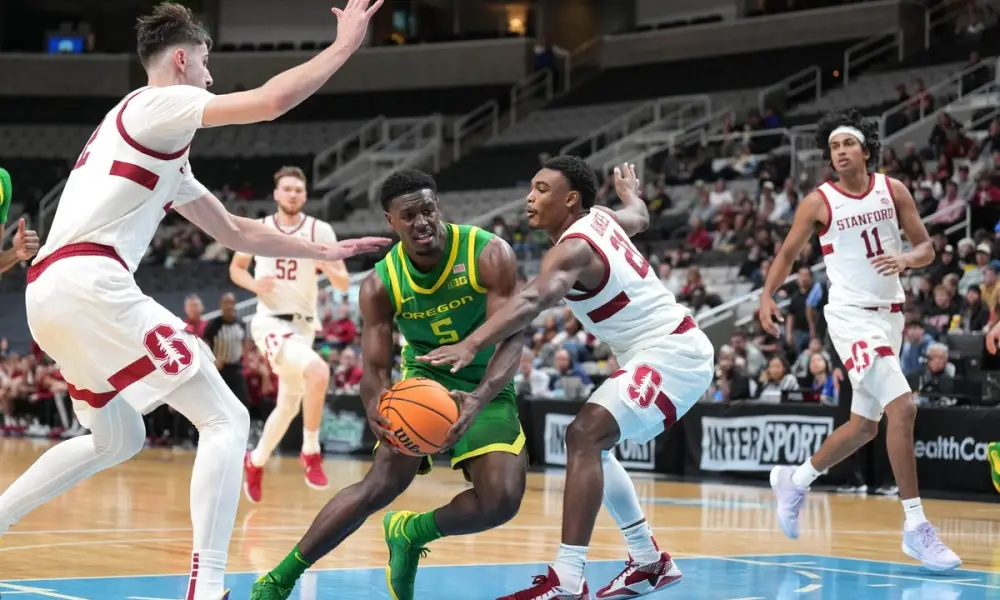

SipaUsa / Icon Sport
The college basketball landscape witnesses an intriguing matchup as the Wake Forest Demon Deacons (16-6) venture west to face the Stanford Cardinal (15-7) at the historic Maples Pavilion. This clash presents a fascinating contrast between Stanford’s high-powered offense and Wake Forest’s defensive prowess, setting the stage for a compelling strategic battle.
Stanford’s journey this season has been marked by impressive home dominance, maintaining a stellar 12-1 record at Maples Pavilion. However, their recent 85-61 defeat against SMU exposed some vulnerabilities in their defensive setup. The Cardinal’s offensive production has been their saving grace, averaging 75.9 points per game, though their shooting efficiency (44.2% field goal percentage) suggests room for improvement.
Wake Forest’s defensive identity has been their cornerstone, allowing just 66.2 points per game (47th nationally). This defensive excellence has propelled them to fifth place in the ACC standings. However, their offensive output of 69.7 points per game (289th nationally) raises questions about their ability to keep pace in high-scoring affairs.
The contrast in playing styles becomes evident when examining advanced metrics:
Stanford Cardinal:
Wake Forest Demon Deacons:
The individual matchups feature some of the ACC’s most dynamic talents. Stanford’s Maxime Raynaud has emerged as a double-double machine, averaging 20.4 points and 11.8 rebounds per game. His presence in the paint has been transformative for the Cardinal’s offense. Complementing Raynaud is Jaylen Blakes, whose 14.6 points and 5 assists per game provide crucial perimeter production.
For Wake Forest, Hunter Sallis continues his breakout season, leading the team with 18.3 points per game while contributing across the board with 4.6 rebounds and 2.5 assists. Cammeron Hildreth’s versatility (13.6 points, 3.9 rebounds, 3.1 assists) gives the Demon Deacons a reliable second option.
The betting landscape for this matchup presents several interesting angles. Stanford enters as slight 1.5-point home favorites, reflecting the competitive nature of this matchup. Recent trends suggest a potential defensive struggle, with both teams trending heavily toward the under in their recent games (8-2 combined in their last 10).
Key Betting Trends:
How significant is Stanford’s home court advantage?
Stanford’s 12-1 home record and seven-game winning streak at Maples Pavilion demonstrate exceptional comfort on their home court. However, Wake Forest’s defensive efficiency could neutralize this advantage.
Will Wake Forest’s defensive prowess translate on the road?
Despite struggling offensively, Wake Forest’s defensive rating (47th nationally) travels well. Their ability to disrupt offensive rhythm has been consistent regardless of venue.
What impact will pace of play have on the outcome?
Both teams have trended toward lower-scoring games recently. Stanford’s higher-scoring tendency (75.9 PPG) versus Wake Forest’s defensive strength (66.2 PPG allowed) suggests a clash of styles that could favor the under.
The combination of Wake Forest’s elite defense and both teams’ recent scoring trends points toward a defensive battle. While Stanford’s home court advantage is significant, Wake Forest’s defensive efficiency and success against unranked opponents make them an intriguing underdog. The under looks particularly appealing given the recent scoring patterns and Wake Forest’s defensive identity.
get the goals listing , players listing , and related
news Roy Miller
Wao woo commerce offering 3 different unique
listing styles of products. Roy Miller

We offer expert sports betting advice, data-driven insights, and winning strategies for enthusiasts and bettors. With a focus on analytics, trends, and expert picks, we empower users to make informed decisions, turning sports knowledge into profitable outcomes. Your go-to source for smarter sports wagering.